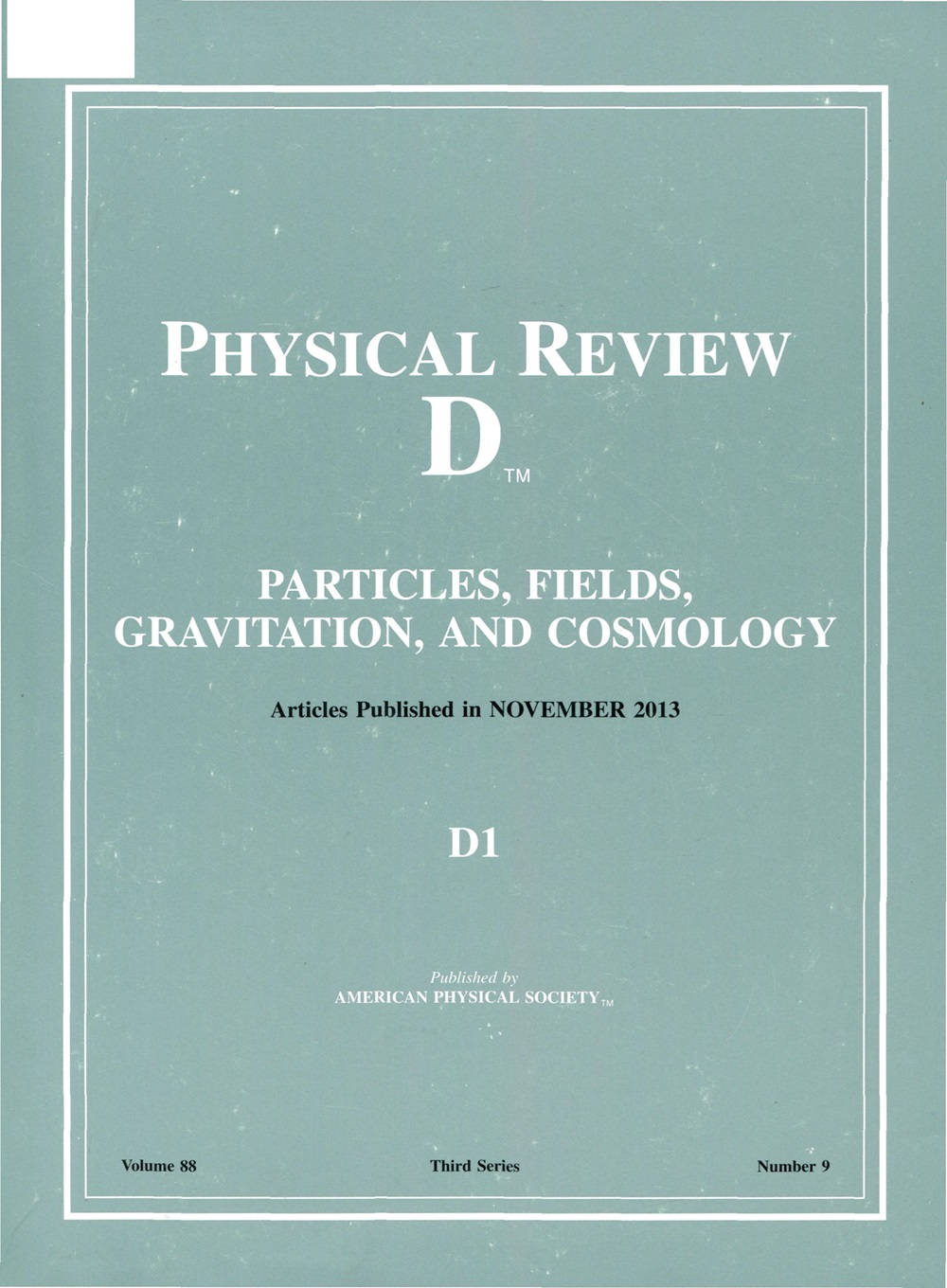Noble dark matter: Surprising elusiveness of dark baryons
IF 5
2区 物理与天体物理
Q1 Physics and Astronomy
引用次数: 0
Abstract
Dark matter could be a baryonic composite of stronglyc upled constituents transforming under SU(2)L. We classify the高贵的暗物质:令人惊讶的难以捉摸的黑暗重子
暗物质可能是在SU(2)L作用下转变的强耦合组分的重子复合物。我们将重子的SU(2)L表示分类为一类简单受限的暗扇区,并发现最轻的状态可以是纯单重态,也可以是与SU(2)L表示的其他中性组分混合的单重态,这强烈抑制了暗物质候选物质与标准模型的相互作用。我们关注的是具有受限SU(Nc)和重暗夸克构成SU(2)L的类矢量nf -夸克的模型。对于基准Nc和Nf,我们计算了重子质量谱,在非相对论夸克模型中结合电弱规范玻色子交换,并证明在TeV质量尺度以上,暗物质主要是单线态。这种单线态性质与最近发现的h宇称相结合,产生了一种类似于惰性气体的惰性状态,因此我们创造了“惰性暗物质”这个术语。我们的结果可以在非相对论有效理论中理解,该理论将暗重子视为基本态,其中我们发现单重态伴随着三重态、五重态或更奇特的表示。与只包含单个SU(2)L多星(如wino)的暗物质模型相比,这种类wimp理论的推广更难以发现或排除,这促使人们在对撞机中进行新的搜索,并重新分析天体物理观测中直接和间接探测的前景。2025年由美国物理学会出版
本文章由计算机程序翻译,如有差异,请以英文原文为准。
求助全文
约1分钟内获得全文
求助全文
来源期刊

Physical Review D
物理-天文与天体物理
CiteScore
9.20
自引率
36.00%
发文量
0
审稿时长
2 months
期刊介绍:
Physical Review D (PRD) is a leading journal in elementary particle physics, field theory, gravitation, and cosmology and is one of the top-cited journals in high-energy physics.
PRD covers experimental and theoretical results in all aspects of particle physics, field theory, gravitation and cosmology, including:
Particle physics experiments,
Electroweak interactions,
Strong interactions,
Lattice field theories, lattice QCD,
Beyond the standard model physics,
Phenomenological aspects of field theory, general methods,
Gravity, cosmology, cosmic rays,
Astrophysics and astroparticle physics,
General relativity,
Formal aspects of field theory, field theory in curved space,
String theory, quantum gravity, gauge/gravity duality.
 求助内容:
求助内容: 应助结果提醒方式:
应助结果提醒方式:


